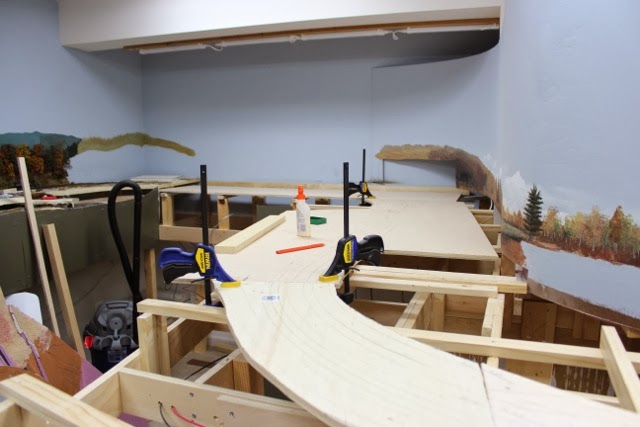The footprint of the layout is similar to many we have on this side of the pond (as the Brits would say) - around the walls with a peninsula jutting into the center of the room. Or at least it will have a peninsula jutting into the center of the room once he finishes building it.
The other day he posted the following regarding whether or not to include a "backscene" - what we'd call a "backdrop." Hey, I might not be able to translate a lick of Russian anymore, but I can handle translating English!
Here's Barry's post:
"I considered a backscene, but reckoned it would make the room feel a bit too cramped as it would effectively block my view of one half of the room from the other. My plan is to have a high ridge down the middle of the peninsula instead, but not as high as a backscene would have done..."
I toyed with the idea of adding a peninsula, but, like Berry, was unsure if it would make the room seem even smaller than it was. In an effort to see what it might look like I used my completely mediocre Photoshop skills to add a "sky" backdrop, as well as some of the planned buildings to the scene. The result is shown below.
I'll leave it to the reader to decide if this makes the room larger. I will say I added the backdrop to the layout and was happy I did.













